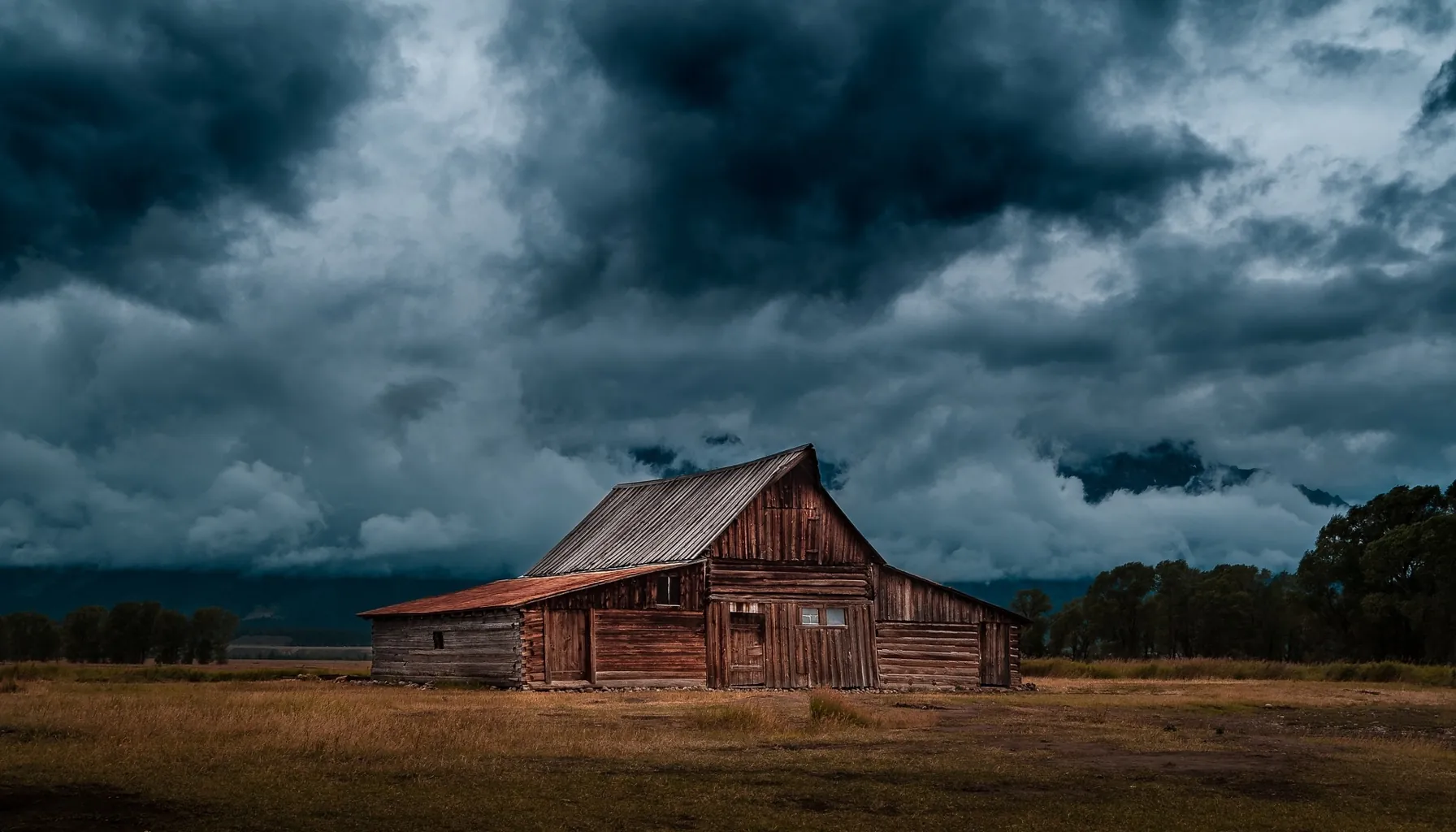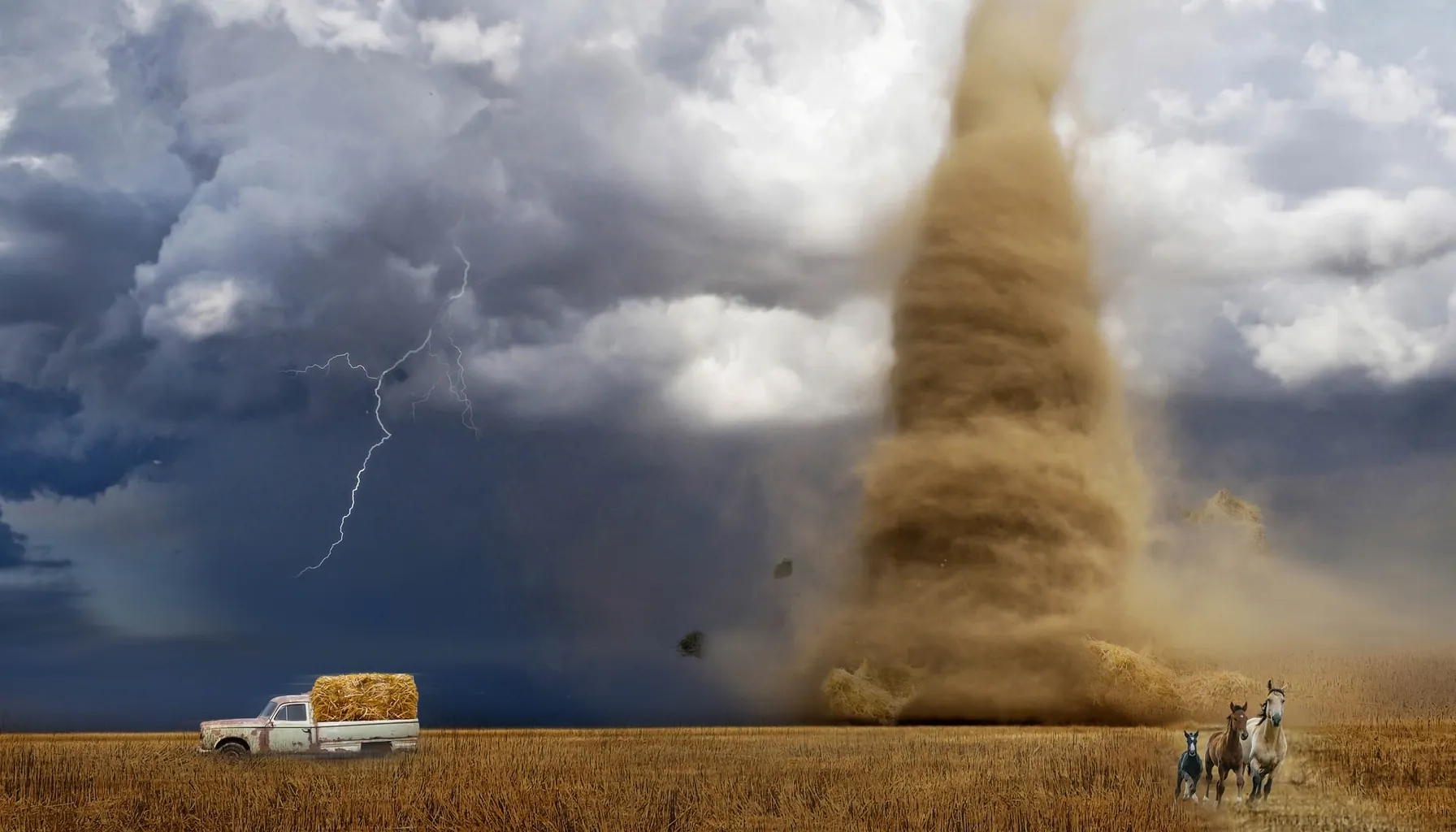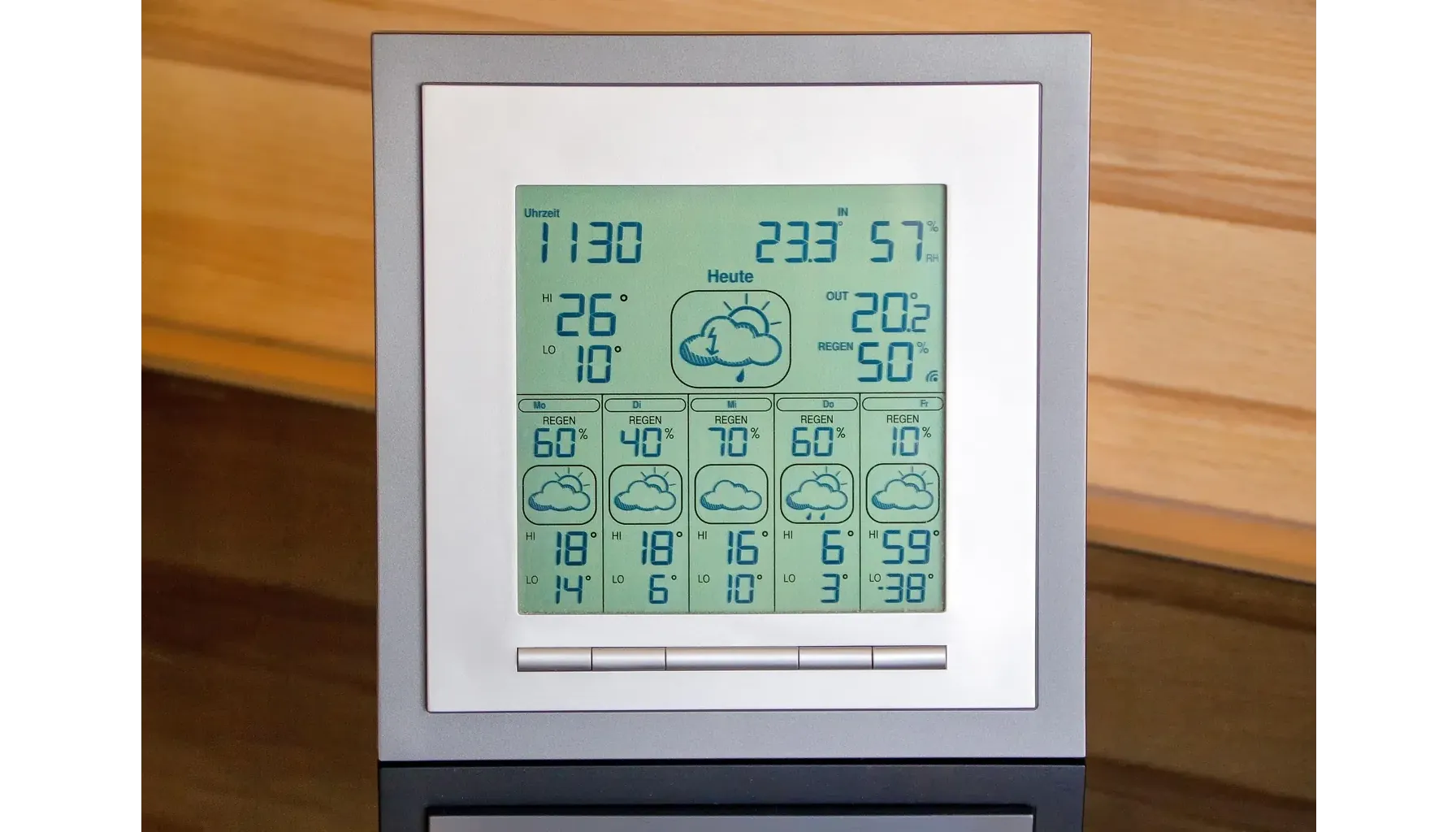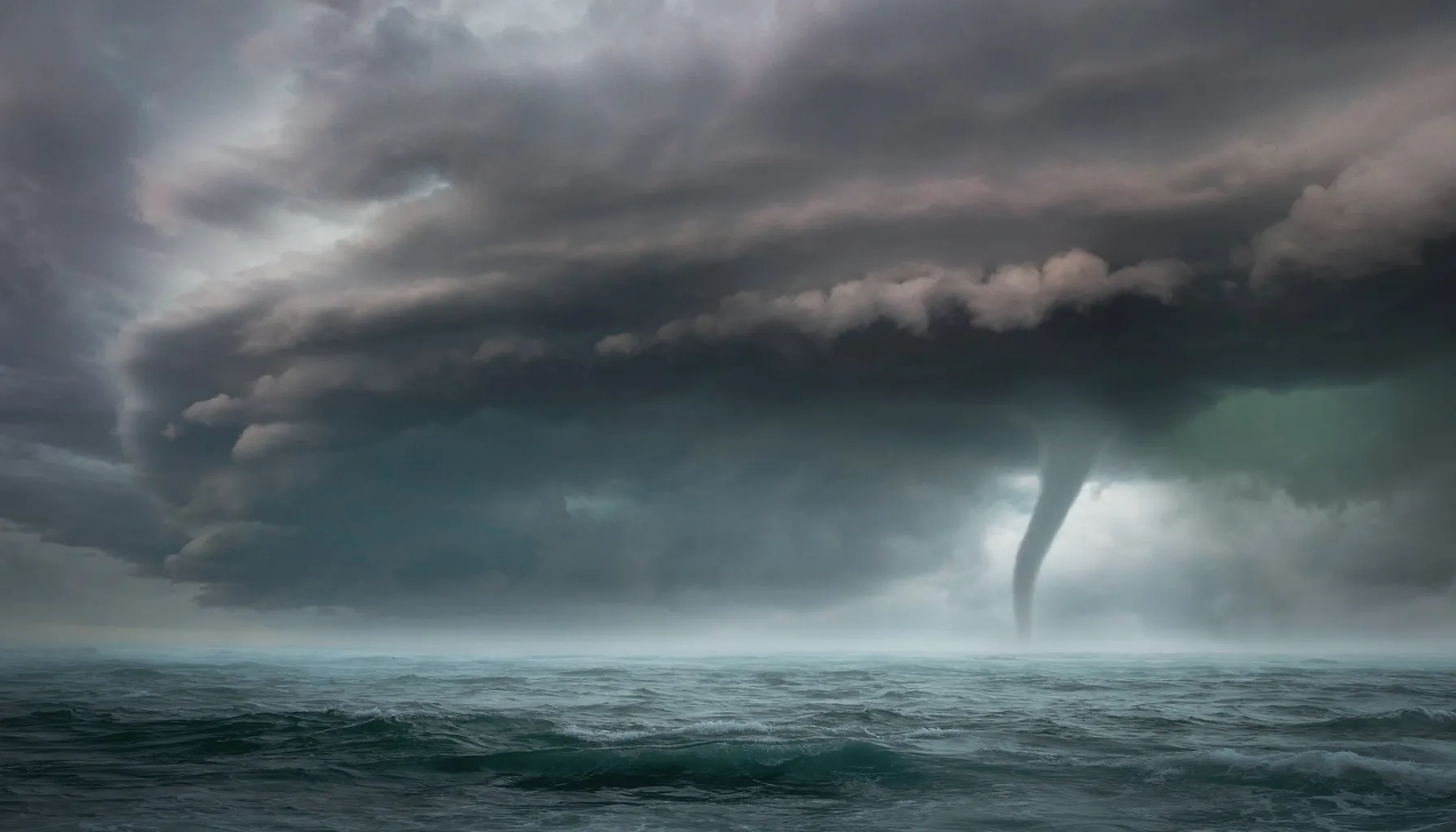Lilapsophobia: Meaning, Symptoms, and Treatment of the Fear of Tornadoes

Contents:
Tornadoes and hurricanes have always inspired respect for the elements. Their power is such that even the most level-headed people's hearts begin to race. But for some people, fear goes far beyond reason: the mere thought of an approaching storm becomes firmly lodged in their minds, and even the mention of a thunderstorm can trigger trembling and panic.
This condition is known as lilapsophobia. A rare but debilitating phobia that gradually interferes with everyday life. For those experiencing it, any darkening of the sky or gust of wind is no longer just a natural phenomenon, but a warning sign.
By the way, to reduce anxiety and train your attention, you can try free mind games — they support cognitive flexibility and help you cope with obsessive thoughts.

What is Lilapsophobia?
Lilapsophobia Definition and Clinical Background
This term refers to a type of specific phobias. In other words, the fear is focused on something specific — here, tornadoes, hurricanes, and other destructive natural disasters.
For people with this condition, it's not just mild anxiety over a bad forecast. Sometimes, they restructure their entire lifestyle: choosing a different region to live in, avoiding travel, and making evacuation plans in case a storm suddenly hits their home.
Lilapsophobia Meaning in Everyday Life
In simple terms, it's excessive anxiety about natural disasters. A person behaves as if a tornado could happen right now, even if they live in a region where they never occur. Because of this, they may avoid traveling, going for walks, or even settling in certain places.
Signs and Symptoms of Lilapsophobia
Common Lilapsophobia Symptoms
Fear has two sides — psychological and physical. Symptoms can include:
constantly monitoring weather forecasts — a person checks apps every half hour, as if their safety depended on it;
avoiding travel to "dangerous" regions — even a tourist trip is canceled if the area is known for storms;
refusing to leave the house when the weather worsens — any dark cloud becomes an excuse to stay inside;
obsessive thoughts of disasters that play in the head like a broken record;
panic attacks at the sight of strong winds, heavy rain, or even when watching news about natural disasters.
Physical reactions also make themselves felt: increased heart rate, sweating, trembling, shortness of breath, sometimes dizziness, and the desire to hide.
People begin to avoid buildings without "reliable shelter," build basements, or buy generators, even if there is no danger. This also affects social life: meetings and trips are postponed due to the forecast.

Table: Behavioral vs Physical Symptoms
Behavioral Manifestations | Physical Manifestations |
Avoiding trips | Sweating |
Constantly checking the forecast | Rapid heartbeat |
Stockpiling “just in case” | Headache, tremor |
Building a shelter | Nausea, muscle tension |
Causes and Risk Factors
Environmental Triggers
Often, phobias are rooted in personal experience. For example, a person may have lived through a devastating hurricane, found themselves without power or service, or even lost property to the elements.
In such cases, anxiety becomes fixed in the memory, and any reminder of the storm triggers stress. But a traumatic experience isn't always directly related. A childhood scene is enough: vivid images from a disaster movie, a tornado report on the news, or a parent's frightened reaction during a storm. The child's brain remembers this as a danger and develops an "alertness" for years to come.
For example, an adult who grew up in a "calm" region may still panic at the sight of dark clouds if they watched a report about a devastating tornado as a child. For them, the image on television becomes as powerful a trigger as the real-life experience.
Genetic Predisposition
Scientists note that if there is a history of anxiety disorders in the family, the risk of developing phobias increases. However, this isn't a permanent struggle, but rather a "vulnerable background" — a certain background against which stress can more quickly develop into fear. One child in such a situation may grow up completely calm, while another reacts more sharply, clinging to frightening experiences.
Experts attribute this to the peculiarities of the amygdala, the part of the brain that triggers the "fight or flight" response. In people predisposed to this, this "alarm signal" is activated more quickly and lasts longer than in others.
Furthermore, lilapsophobia rarely exists alone. For example, an obsessive fear of thunder and lightning (astraphobia) can exacerbate anxiety, as both fears feed into the same scenario: the anticipation of an uncontrollable storm.

Impact on Daily Life
Social and Personal Consequences
Life with this condition limits the options a person really has. A person may refuse to work in a region with a variable climate, avoid travel, and miss out on meetings and holidays.
Psychological Strain
The constant feeling of threat is debilitating: insomnia develops, anxiety levels increase, and concentration declines. Some try to stay in control by logging every forecast, but over time this habit turns into a dependency that fuels their anxiety even more.
Diagnosis and Tests
Lilapsophobia Professional Evaluation
Typically, the first step toward diagnosis is a consultation with a psychiatrist or psychologist. There's a lilapsophobia test, which includes interviews and behavioral assessments. The specialist may ask:
how often the person thinks about tornadoes;
whether their behavior changes when the weather changes;
if they have had traumatic events related to natural disasters;
does the person avoid places or activities that were once familiar.
It's important for doctors to distinguish this fear from other conditions. For example, there's anemophobia (fear of air), when anxiety is triggered by the wind itself, not by large-scale events.
Lilapsophobia Treatment Options

Exposure Therapy
The most common method is gradual "immersion" into the frightening situation. First, the person works with photographs of storms, then with videos, and then discusses real forecasts with a therapist.
Cognitive Behavioral Therapy
The classic approach is CBT. It helps identify irrational beliefs ("a tornado could happen any minute") and replace them with more realistic ones.
Medication and Supportive Care
Medications don't cure phobias, but antidepressants and anti-anxiety drugs can reduce the severity of symptoms. They are often combined with psychotherapy.
Stress Management Techniques
Practices like meditation, breathing techniques, and keeping a journal can ease general anxiety. Some also turn to the Mind Elevate app, using it to sharpen focus and build steadier concentration.
Different Skies, Same Fear
Fear of hurricanes often coexists with other anxieties, such as fear of thunder, rain, or darkness. Lilapsophobia can even be combined with a fear of the sun (heliophobia). All of these fears share one commonality: ordinary natural phenomena are perceived as a threat.
Caution is normal — checking the forecast or planning shelter. But if anxiety begins to interfere with normal life, then it's a phobia.
Prevention and Coping Strategies

Everyday Practices
While it's impossible to completely prevent fear, there are steps that can reduce the risk:
limiting caffeine and alcohol;
getting regular sleep;
physical activity;
social support.
checking the weather forecast only once a day;
keeping a worry diary;
Knowing more about hurricanes often reduces anxiety. Meteorology courses or learning about the history of weather events can help shift the focus from emotions to facts.
With therapy, most people see noticeable improvements. Fear may remain mild, but it no longer controls their lives.
Table: Treatment Approaches and Their Effects
Method | How It Helps |
Exposure therapy | reduces sensitivity to triggers |
CBT | changes irrational beliefs |
Medication | lowers levels of anxiety and depression |
Relaxation techniques | calm the body and mind, prevent flare-ups |
Learning to Trust the Calm
Coping with a fear of violent storms can be tough, yet it doesn’t mean you’re doomed to live with it forever. A combination of therapy, education, and support offers a chance to regain control. While the anxiety may not disappear completely, it becomes manageable and no longer interferes with your plans.





